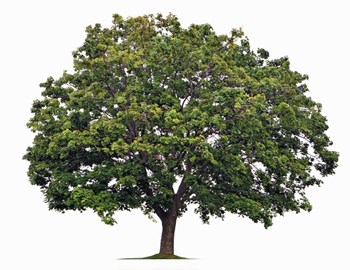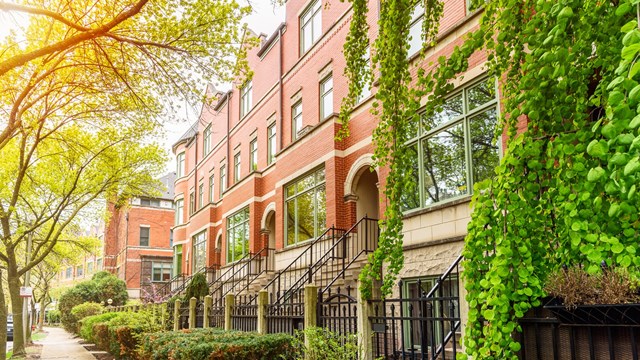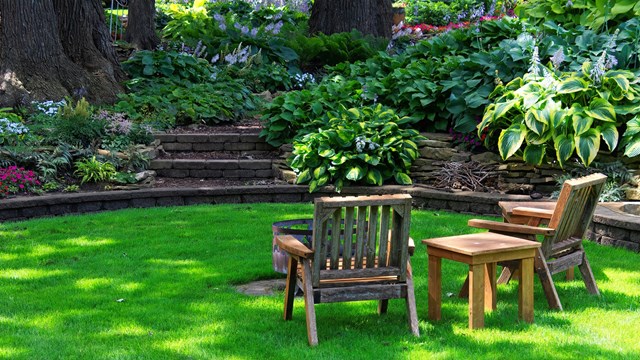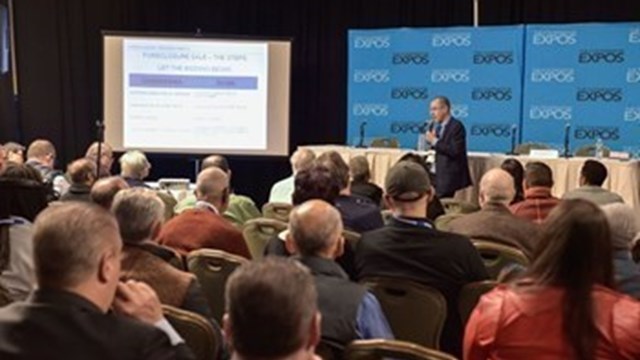
“I think that I shall never see / a poem so lovely as a tree.” – Joyce Kilmer, “Trees”
Trees seem simple: You plant one, you wait a long time, then you admire its beauty—right? Though these steps are certainly part of the process, HOAs must approach the business of trees with a bit more forethought and follow-through to benefit both their residents and the tree itself.
A Case For Trees
The term “tree-hugger” is somewhat pejorative, but when you examine all the benefits trees confer (or shall we say 'conifer’?) you too might feel like hugging the next tree you encounter. To begin with, trees play a significant role in bolstering an HOA’s bottom line. The number of trees on a property, the health of those trees, the shade or wind-break they provide, and the type/quality of trees planted all contribute directly to property value. This is all apart from the emotional factor: People who care about the trees on their lawn, courtyard, block, etc. aren’t all “back to nature” hippie types, so to speak. Research has shown that people across all demographics, social strata, and age groups tend to equate trees with happiness and value.
In their guide, Under The Canopy: Creating Personal Green Space, the Illinois Forestry Development Council notes that “[Trees also] create a privacy buffer or winter wind-break; cool your home and conserve energy by shading roof, walls, patios, driveways and air-conditioning units; preserve special views from within; attract birds and other wildlife; and beautify your property.”
All this beauty and property value comes when the right trees are planted and properly maintained in the right place, however.
An Ounce of Prevention
“Choosing the right tree is so important,” says Heather Green, the appropriately-surnamed village forester for the Department of Public Works in Oak Lawn. Green, a certified arborist who works regularly with city trees, says that when tree problems like pests, decay or rot occur, it’s often because the placement of the now-troubled tree wasn’t thought out properly from the outset.
“When you plant a tree, you want it to be around for 100 years, not 40,” Green says. “Landscapers will sometimes plant a tree that is cheaper, a ‘fast-grower.’ Those trees may grow quickly—which is why they’re cheaper—but the faster they grow, the faster they fall apart.”
Green points out the example of a weeping willow. “A weeping willow is a beautiful tree,” she says, “And it will grow fast. But the cells of a willow are long and weak, as opposed to an oak, which are much stronger and thicker. Oaks can handle wind, willows can’t.”
So in a city like Chicago, where there is plenty of wind, snow, and heavy rain in certain seasons, a willow might not be the best choice for your property, no matter how pretty it looks—not unless you’re willing to spend time and money to treat, care for, and ultimately replace it. When picking a tree, an ounce of forethought is worth many thousands of dollars in future maintenance.
Harold Hoover has been in the tree business since 1972 and has worked as a specialist for Kramer Tree Specialists, Inc. in West Chicago for over 12 years. Hoover suggests that there are certain tree species particularly suited to life here in Illinois.
“Several species that come to mind are the maples, lindens, oaks, hybrid elms and callery pears,” says Hoover. “For evergreens, some of the pines, spruces and firs—as long as they're properly sited—perform well in our climate and soils, [including] Eastern White and Ponderosa Pine, Norway Spruce, Concolor Fir, both Eastern and Western Arborvitae, and most of the Juniper cultivars.”
Hoover also knows that when it comes to planting, it’s all about variety—for a host of reasons largely concerned with cost, not necessarily aesthetics. “The key to having an healthy, resilient tree population is to aim towards diversifying the amounts and quantities of species you have,” Hoover says. “Strive towards having no more than 5 percent of any one single species represented, and no more than 10 percent of any one genus. Beyond a doubt, there will likely be future pest issues (things like Dutch Elm disease and now the Emerald Ash Borer), but you can minimize and even slow the spread of those with proper diversification.”
Location, Location, Location
The “best” tree ever isn’t going to be a good choice if it’s planted in the worst spot within your property line. Trees have a hidden component: roots. Most people believe a tree’s roots mirror the trunk and canopy seen above ground, but the truth is that most tree’s roots don’t go 40 or 50 feet into the earth. Roots do tend to grow outward, often as wide in diameter as the tree is tall, but it’s rare that they extend more than several feet down into the soil. One thing is for sure: The roots are the lifeblood of the tree, so no matter where they are, if the root system is injured, it’s tree 911.
“If you're talking about trees in an urban setting, you can compare them to dogs,” says Green. “If you live in a small apartment, you probably shouldn’t get a Great Dane. And if you have 40 acres, you probably don’t need a tiny little dog. Trees should fit where you live. People see pictures of trees and say, ‘Ooh, I want that one’ and they often go off and plant the tree they liked the look of in a photograph. But you need to know how long the roots will grow, how tall it will get, and whether your soil is right for proper growth.”
Employing the help of an arborist or forester is crucial; the clerks at the chain garden store can certainly be helpful, but they are unlikely to be able to give a tree’s full profile and certainly can’t answer questions about power lines, sewage drain locations, and various other unique variables on your property that could affect the life—and cost—of your tree.
“You may get down to three or four trees of your choice,” says Green. “They might all meet your size and function requirements. But will the tree have everything it needs? Enough space, soil and sun? An arborist can help you with this.” ComEd also offers free locating service when it comes to dealing with power lines, and city offices can help locate pipes and other underground obstructions.
Whoever you get to help you, you will need assistance in planting so you don’t have nightmares later on. “There are plenty of hazard-related issues that can result from poor species selection and/or poor planning,” Hoover says. “Everything from utility conflicts, pavement cracking and displacement, visibility or traffic obstruction, structure clearance problems and fruit and litter issues can result.”
Giving Trees a Hand
Even perfectly planted and well-suited trees need a hand now and then. There are ways to do this that help the tree in the long-term, and ways that can harm it—and your property value—further.
Despite decades of widely disseminated information against the practice, tree-topping is still something people do when they think their trees have gotten too large. Tree-topping is basically the indiscriminate cutting of tree branches to stubs, and arborists almost universally despise it.
“’Tree-topping’ is never a good choice and is destructive to tree health and long-term structural integrity,” Hoover says. “Normal pruning maintenance may be necessary to provide adequate and timely clearance for both pedestrian and vehicular traffic as the tree grows and matures, if it's warranted. Obviously, a tree in a large city park lawn will have different needs versus one growing in a downtown parkway site. Major deadwood removal, plus any broken/hanging limbs should be dealt with on a timely and routine basis depending on size and likely ‘targets’ nearby.”
Since foliage helps regenerate the root system, the Illinois Forestry Development Council recommends limiting pruning to only dead or broken limbs for the first three years of the tree’s life, and they warn against removing more than 25 percent of a tree’s foliage in one season. Proper pruning cuts—and there are three specific types of cuts arborists use, depending on the type of tree and branch—done with disinfected pruning tools will prevent the spread of disease.
Speaking of disease, trees that experience decay and/or pests often require help to recover—just as a sick person may need antibiotics to throw off an infection that doesn't clear on its own. “If you’re concerned about a tree—say if the leaves aren’t growing—it may be decay,” says Green. “A tree can have cosmetic issues, but it doesn’t always mean decay, which is really a structural issue. An arborist can tell you for sure and prune it to reduce risk of failure.”
Hoover also points out that pests are usually not a problem. “Generally speaking, bugs you can see aren’t a problem. That’s a superficial cosmetic issue. You can spray for bugs, but they’ve got natural predators and for the most part, nature takes care of itself—you don’t need to worry. Of course, significant concentrations of pests like the Emerald Ash Borer must be controlled or they will kill your tree, largely because of the pressure on the tree.” The healthier and stronger your tree, the less likely it will fail under the weight of pests.
Tree Love
Property managers are often the people to work directly with arborists or other tree care specialists. And because trees and emotions are often tough—if not impossible—to separate, communication with the board and building or association residents about the purpose of various tree care activities will prevent issues of the interpersonal kind.
According to The Arbor Day Foundation, “Residents often become very emotional when they see crews working near street trees. Any sign of abuse to trees starts phones ringing in city hall and at utility offices.” That goes for management offices, too. Treating your HOA’s trees with respect and proper care will put residents at ease and ensure the tree’s life and benefits for decades, maybe longer.
Mary Fons is a Chicago-based freelance writer and a frequent contributor to The Chicagoland Cooperator.






Leave a Comment